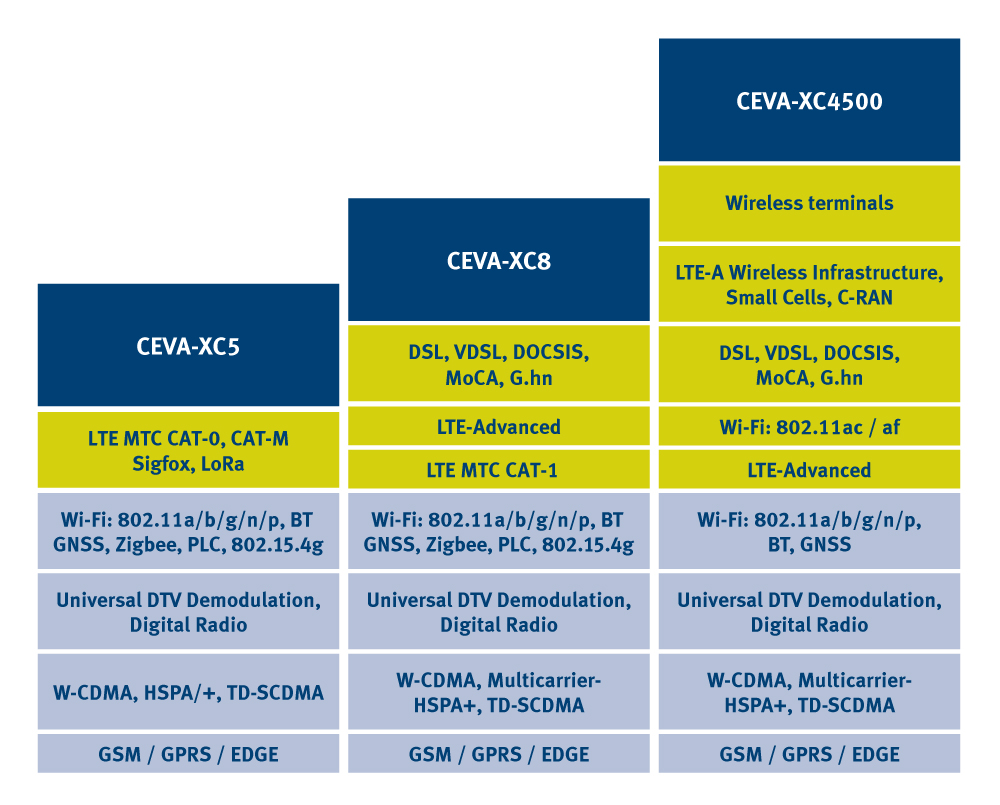At the end of 2015, Wired magazine declared that it had been the year of “building the infrastructure for the day when all our devices are connected”. The article goes on to claim that the technology is already here, and that “the parts are only going to continue to get better, smaller, and cheaper”. The question is how? In this article I would like to discuss some of the strategies we’ve been using to achieve precisely that: making the parts better, smaller and cheaper.
Machine Type Communication: A multitude of protocols
Machine Type Communication (MTC) or machine to machine (M2M) communication is a very broad term which refers to any type of communication between devices connected over the internet. MTC could refer to a fitness tracker on your wrist talking to your phone in your pocket, or it could refer to a device on a freight barge tracking a package across the Pacific Ocean. Some of the applications require short distance data transfers and are best suited by something like Wifi or Bluetooth, while others require cellular communications due to its wide spread coverage, as well as positioning technologies, like GPS or GLONASS, to track their location. LTE, Wi-Fi, PLC, ZigBee, GNSS, LoRa, SIGFOX are just a few of the protocols in use, and many of these are actually groups of standards with subdivisions for different uses and generations. Even within a specific communication standard, like LTE, there are huge variations on the amount of data that needs to be transferred, so specific sub categories have been developed like LTE Cat-1 and Cat-M standards.
1 M2M/IoT protocols and applications (Source: CEVA)
These standards are especially useful for M2M devices that transfer relatively small amounts of data, and need to operate with extremely low power. Many of these devices, especially those utilized for asset tracking and smart meters, are also deployed for many years without physical maintenance. For example, for certain applications, they are expected to operate for ten years on two AA batteries.
Software Defined Modem: Future-proof by design
Most of the existing modem solutions for these applications are hardware centric, meaning they don’t offer flexibility to future-proof the design, and they cannot be remotely upgraded. Furthermore, existing multi-mode systems are basically independent modems that are stitched together, resulting in sub-optimal area and cost. Any initiative to reduce cost by merging common blocks is usually thwarted by the huge effort and development time and risk. This will continue to be true for the vast number of protocols and standards proposed for IoT.
Using a programmable solution makes it possible to support a variety of different protocols, while providing the advantage of enabling remote firmware updates to deal with changes and fix issues on the fly. It also enables the integration of the protocol stack and the physical layer processing into a single core. This saves space and drives down the cost of the device. In addition, location applications like GNSS or OTDOA can also be supported on the same core.
Power scaling and snooping mechanism
For these types of applications, every drop of power is crucial. A Power Scaling Unit is used to reduce the dynamic power and the leakage power. The dynamic power is controlled through clock gating techniques, where the clock can be independently shut down for the DSP core, the memory subsystem, the program and data memories, and the emulation and debug modules.
The leakage power is controlled through voltage domains. The system can have a separate voltage domain for the DSP core and memory sub-systems, a separate voltage domain for the program and data memories, and a separate voltage domain for the emulation and debug (which is shutdown during production), while the Power Scaling Unit is maintained always-on. In addition, a snooping mechanism is used to monitor the memory sub-system, and allow the core to be shut down until there is enough data to begin processing.
By employing these techniques, combined with the experience accumulated by over 6 billion CEVA-powered devices, we can design a system that only uses the power that it actually needs, and only when the core is active. In fact, the CEVA-XC product line addresses exactly these issues, and offers scalable solutions for various wireless applications. CEVA’s new Dragonfly reference platforms include all the tools needed to design low data-rate M2M and IoT communication systems and applications, reducing time to market without compromising on performance.
2 CEVA-XC product line
While many things are still falling into place to make the IoT as prevalent and as useful as we expect, a few things are already perfectly clear. The devices of the MTC world will have to get better, smaller and cheaper. The way to achieve this will have to be through efficient, low-power technology that can stay flexible enough to adapt to the future as it unfolds. That’s exactly what the CEVA Dragonfly 1 and CEVA Dragonfly 2 platforms are designed to achieve.
Want to hear more ?
Click here to watch CEVA’s webinar about Machine Type Communication – How To Design a LTE-Based M2M Asset Tracker SoC.



